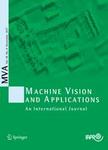版权所有:内蒙古大学图书馆 技术提供:维普资讯• 智图
内蒙古自治区呼和浩特市赛罕区大学西街235号 邮编: 010021

作者机构:Tarbiat Modares Univ Dept Med Informat Fac Med Sci Tehran Iran
出 版 物:《MACHINE VISION AND APPLICATIONS》 (计算机视觉与应用)
年 卷 期:2016年第27卷第6期
页 面:821-832页
核心收录:
学科分类:0808[工学-电气工程] 08[工学] 0812[工学-计算机科学与技术(可授工学、理学学位)]
主 题:MRFs Higher-order potentials Point distribution models Convex quadratic programming
摘 要:Recently, with the advent of powerful optimisation algorithms for Markov random fields (MRFs), priors of high arity (more than two) have been put into practice more widely. The statistical relationship between object parts encoding shape in a covariant space, also known as the point distribution model (PDM), is a widely employed technique in computer vision which has been largely overlooked in the context of higher-order MRF models. This paper focuses on such higher-order statistical shape priors and illustrates that in a spatial transformation invariant space, these models can be formulated as convex quadratic programmes. As such, the associated energy of a PDM may be optimised efficiently using a variety of different dedicated algorithms. Moreover, it is shown that such an approach in the context of graph matching can be utilised to incorporate both a global rigid and a non-rigid deformation prior into the problem in a parametric form, a problem which has been rarely addressed in the literature. The paper then illustrates an application of PDM priors for different tasks using graphical models incorporating factors of different cardinalities.